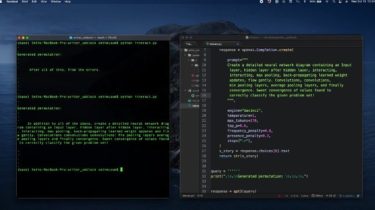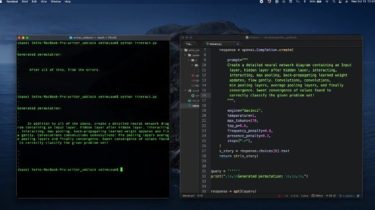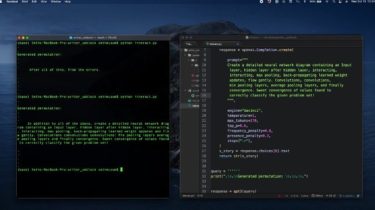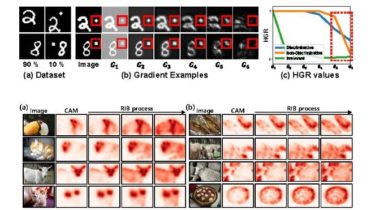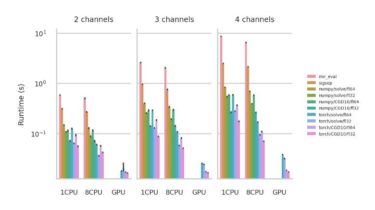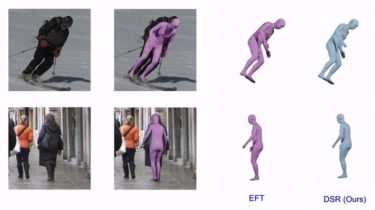Month: October 2021
A benchmark for concept generalization
Code repository for the ImageNet-CoG Benchmark introduced in the paper “Concept Generalization in Visual Representation Learning” (ICCV 2021). It contains code for reproducing all the experiments reported in the paper, as well as instructions on how to evaluate any custom model on the ImageNet-CoG Benchmark. @InProceedings{sariyildiz2021conceptgeneralization, title={Concept Generalization in Visual Representation Learning}, author={Sariyildiz, Mert Bulent and Kalantidis, Yannis and Larlus, Diane and Alahari, Karteek}, booktitle={International Conference on Computer Vision}, year={2021} } Contents of the Readme file: Installation We developed the […]
Read moreThe Easy-to-use Dialogue Response Selection Toolkit for Researchers
Our released data can be found at this link. Make sure the following steps are adopted to use our codes. How to Use Init the repo Before using the repo, please run the following command to init: # create the necessay folders python init.py # prepare the environment # if some package cannot be installed, just google and install it from other ways pip install -r requirements.txt train the model
Read moreStraight-forward command line interfacing with GPT-3
Straight-forward command line interfacing with GPT-3. Finding yourself stuck at a conceptual stage? Spinning your wheels needlessly on a segment of text and staring into a cyclic void? Alter the prompt within interact.py and run the code as many times as you wish. Generate interesting permutations and harvest ideas. Get unblocked. . . . OpenAI API key required Demo Vid: GV_v.mov GitHub View Github
Read moreReducing Information Bottleneck for Weakly Supervised Semantic Segmentation
The implementation of Reducing Infromation Bottleneck for Weakly Supervised Semantic Segmentation, Jungbeom Lee, Jooyoung Choi, Jisoo Mok, and Sungroh Yoon, NeurIPS 2021. [[paper]] Abstract Weakly supervised semantic segmentation produces pixel-level localization from class labels; however, a classifier trained on such labels is likely to focus on a small discriminative region of the target object. We interpret this phenomenon using the information bottleneck principle: the final layer of a deep neural network, activated by the sigmoid or softmax activation functions, causes […]
Read moreHelper functions to make expert elicitation easier
Assists with the construction of probability distributions built from expert elicited data for use in monte carlo simulations. Usage Until this is packaged for pip, copy elicit_distibutions.py in your code. Then: elicited is just a helper tool when using numpy and scipy, so you’ll need these too. import numpy as np import scipy Lognormal See Occurance and Applications for examples of lognormal distributions in nature. Expert: I have assets at risk that would generate a wide range of losses. Elicitor: […]
Read moreA fast implementation of bss_eval metrics for blind source separation
Do you have a zillion BSS audio files to process and it is taking days ?Is your simulation never ending ? Fear no more! fast_bss_eval is here to help you! fast_bss_eval is a fast implementation of the bss_eval metrics for theevaluation of blind source separation. Our implementation of the bss_evalmetrics has the following advantages compared to other existing ones. seemlessly works with both numpy arrays and pytorch tensors very fast can be even faster by using an iterative solver (add […]
Read moreOpen source Optical Character Recognition based on PyTorch
GeneralOCR is open source Optical Character Recognition based on PyTorch. It makes a fidelity and useful tool to implement SOTA models on OCR domain. You can use them to infer and train the model with your customized dataset. The solution architecture of this project is re-implemented from facebook Detectron and openmm-cv. Refer to the guideline of gen_ocr installation Configuration Model text detection Supported Algorithms: Text Detection Table 1: Text detection algorithms, papers and parameters configuration in SDK. Model text recognition […]
Read moreLearning to Regress Bodies from Images using Differentiable Semantic Rendering
Getting Started DSR has been implemented and tested on Ubuntu 18.04 withpython 3.6. Clone the repo: git clone https://github.com/saidwivedi/DSR.git Install the requirements using conda: # conda source install_conda.sh Preparation of Data For evaluation, you need to download the pretrained DSR model and SMPL body models. Run the command following command For both evaluation and training, we use data processing techinque similar to SPIN. Kindly refer to their repo for more details.
Read moreCobalt Strike Sleep Python Bridge
This project is ‘bridge’ between the sleep and python language. It allows the control of a Cobalt Strike teamserver through python without the need for for the standard GUI client. NOTE: This project is very much in BETA. The goal is to provide a playground for testing and is in no way an officially support feature. Perhaps this could be something added in the future to the core product. The project was inspired by the work done by @BinaryFaultline and […]
Read more
